House of Hohenzollern
(Redirected from Hohenzollern)
Jump to: navigation, search
"Hohenzollern" redirects here. For other uses, see Hohenzollern (disambiguation).
House of HohenzollernGermany, Prussia
Country:
Germany, Romania
Parent house:
Burchardinger dynasty
Titles:
Count of ZollernMargrave of BrandenburgDuke of PrussiaBurgrave of NurembergMargrave of BayreuthMargrave of Brandenburg-AnsbachKing of PrussiaGerman Emperor
Founder:
Burgrave Frederick I of Nuremberg
Final ruler:
Germany and Prussia:Emperor William II (1888-1918)Romania:
King Mihai I (1927-1930, 1940-1947)
Current head:
Germany and Prussia:Georg Friedrich, Prince of Prussia (1994-)
Hohenzollern-Sigmaringen:Frederick William, Prince of Hohenzollern (1965-)Romania:King Michael I (1947-)
Founding year:
1100s AD
Deposition:
Germany and Prussia:1918: German RevolutionRomania:
1947: Communist take-over
Ethnicity:
German
Cadet branches:
Hohenzollern-HechingenHohenzollern-SigmaringenHohenzollern-Haigerloch
The House of Hohenzollern is a noble family and royal dynasty of electors, kings, and emperors of Prussia, Germany, and Romania.
It originated in the area around the town of Hechingen in Swabia during the 11th century. They took their name from their ancestral home, the Burg Hohenzollern castle near the forementioned town.
The family uses the motto nihil sine deo (English: Nothing Without God). The family coat of arms, first adopted in 1192, began as a simple shield quarterly sable and argent. The head and shoulders of a hound were added in 1317 by Frederick IV.[1] Later quartering incorporated other branches of the family.
The family split into two branches, the Catholic Swabian branch and Protestant Franconian branch. The Swabian branch ruled the area of Hechingen until their eventual extinction in 1869. The Franconian branch was comparatively more successful. Branches within the Franconian branch ascended the throne of Margravate of Brandenburg in 1415 and of the Duchy of Prussia in 1525. The union of these two Franconian branches in 1618 allowed the creation of the Kingdom of Prussia in 1701, the state which led the unification of Germany and the creation of the German Empire in 1871.
Social unrest at the end of World War I led to the German Revolution of 1918, with the subsequent formation of the Weimar Republic forcing the Hohenzollerns to abdicate, thus bringing an end to the modern German monarchy. The Treaty of Versailles in 1919 set the final terms for the dismantling of the German Empire.
Contents[hide]
1 Origins
1.1 Counts of Zollern (before 1061 until 1204)
2 Franconian senior branch and Brandenburg-Prussian Branch
2.1 Burgraves of Nuremberg (1192-1427)
2.2 Margraves of Brandenburg-Ansbach (1398-1791)
2.3 Margraves of Brandenburg-Kulmbach (1398-1604), later Brandenburg-Bayreuth (1604-1791)
2.4 Margraves and Electors of Brandenburg (1417-1806)
2.5 Dukes of Brandenburg-Jägerndorf (1523-1622)
2.6 Margraves of Brandenburg-Küstrin (1535-1571)
2.7 Margraves of Brandenburg-Schwedt (1688-1788)
2.8 Dukes of Prussia (1525-1701)
2.9 Kings in Prussia (1701-1772)
2.10 Kings of Prussia (1772-1918)
2.11 German Kings and Emperors (1871-1918)
2.11.1 Reigning (1871-1918)
2.11.2 Pretenders (1918 until today)
2.12 House of Hohenzollern
3 Swabian junior branch
3.1 Counts of Hohenzollern (1204-1575)
3.2 Counts of Hohenzollern-Haigerloch (1567-1630 and 1681-1767)
3.3 Counts, later Princes of Hohenzollern-Hechingen (1576-1623-1850)
3.4 Counts, later Princes of Hohenzollern-Sigmaringen (1576-1623-1849)
3.5 Kings of the Romanians
3.5.1 Reigning (1866-1947)
3.5.2 Succession (1947 until today)
3.6 House of Hohenzollern-Sigmaringen
4 See also
5 References
6 External links
//
[edit] Origins
[edit] Counts of Zollern (before 1061 until 1204)
The oldest known mentioning of the Zollern dates from 1061. It was a countship, ruled by the counts of Zollern. The accepted origin of the counts of Zollern is that they are derived from the Burchardinger dynasty.
until 1061: Burkhard I
before 1125: Frederick I (son of)
circa 1142 : Frederick II (son of)
before 1171 - circa 1200: Frederick III/I (son of, also Burgrave of Nuremberg)
Count Frederick III of Zollern was a loyal retainer of the Holy Roman emperors Frederick Barbarossa and Henry VI and about 1185 he married Sophia of Raabs, the daughter of Conrad II, Burgrave of Nuremberg.
After the death of Conrad II, who left no male heirs, Frederick III was granted the burgraviate of Nuremberg in 1192 as burgrave Frederick I of Nuremberg-Zollern. Since then the family name became to be known as Hohenzollern.
After Frederick's death, his sons partitioned the family lands between themselves:
The youngest brother, Frederick IV, received the county of Zollern and burgraviate of Nuremberg in 1200 from his father, thereby founding the Swabian branch of the House of Hohenzollerns. The Swabian line remained Catholic.
The oldest brother, Conrad III, received the burgraviate of Nuremberg in 1218 from his younger brother Frederick IV, thereby founding the Franconian branch of the House of Hohenzollerns. The Franconian line later converted to Protestantism.
[edit] Franconian senior branch and Brandenburg-Prussian Branch
The senior Franconian branch of the House of Hohenzollern was founded by Conrad III, Burgrave of Nuremberg.
Beginning in the 16th century, this branch of the family became Protestant and decided on expansion through marriage and a purchase of surrounding lands.
The family were supporters of the rulers from the House of Hohenstaufen and the House of Habsburg of the Holy Roman Empire during the 12th to 15th centuries, by which they were rewarded with several territorial benefits.
In a first phase, the family gradually added to their lands, at first with many small acquisitions in the Franconian and Bavarian regions op Germany:
Ansbach in 1331
Kulmbach in 1340
In a second phase, the family expanded their lands further with large acquisitions in the Brandenburg and Prussian regions of Germany and Poland:
Margraviate of Brandenburg in 1417
Duchy of Prussia in 1618
These acquisitions were to eventually propel the Hohenzollerns from a minor German princely family into one of the most important in Europe.
[edit] Burgraves of Nuremberg (1192-1427)
Region of Nuremberg, Ansbach, Kulmbach and Bayreuth, (Franconia and Bavaria, Germany)
Main article: Burgraves of Nuremberg
1192–1200/1204: Frederick I/III (also count of Zollern)
1204–1218: Frederick II/IV (son of, also count of Zollern)
1218–1261/1262: Conrad I/III (brother of, also count of Zollern)
1262–1297: Frederick III (son of)
1297–1300: John I (son of)
1300–1332: Frederick IV (brother of)
1332–1357: John II (son of)
1357–1398: Frederick V (son of)
At Frederick V's death on 21 January 1398 his lands were partitioned between his two sons:
1398-1420: John III/I (son of, also Margrave of Brandenburg-Kulmbach)
1420-1427: Frederick VI/I/I, (brother of, also Elector of Brandenburg and Margrave of Brandenburg-Asbach)
After John III/I's death on 11 June 1420, the two principalities were shortly reunited under Frederick VI/I/I. From 1412 Frederick VI became Margrave of Brandenburg as Frederick I and Elector of Brandenburg as Frederick I. From 1420 he became Margrave of Brandenburg-Kulmbach. Upon his death on 21 September 1440, his territories were divided between his sons:
John II, Margrave of Brandenburg-Kulmbach
Frederick II, Elector of Brandenburg
Albert III, Elector of Brandenburg and Margrave of Brandenburg-Ansbach
From 1427 onwards the title of Burgrave of Nuremberg was absorbed into the titles of Margrave of Brandenburg-Alsbach and Margrave of Brandenburg-Kulmbach.
[edit] Margraves of Brandenburg-Ansbach (1398-1791)
Main article: Margraves of Brandenburg-Ansbach
1398: Frederick I (also Margrave of Brandenburg-Kulmbach)
1440: Albert I/I/III Achilles (son of, also Margrave of Brandenburg-Kulmbach and Elector of Brandenburg)
1486: Frederick II/III (son of, also Margrave of Brandenburg-Kulmbach)
1515: George I/I the Pious (son of, also Duke of Brandenburg-Jägerndorf)
1543: George Frederick I/I/I/I (son of, also Margrave of Brandenburg-Kulmbach, Duke of Brandenburg-Jägerndorf and Regent of Prussia)
1603: Joachim Ernst
1625: Frederick III
1634: Albert II
1667: John Frederick
1686: Christian I Albrecht
1692: George Frederick II/II (later Margrave of Brandenburg-Kulmbach)
1703: William Frederick (before 1686-1723)
1723: Charles William (1712-1757)
1757: Christian II Frederick (1757-1791) (son of, also Margrave of Brandenburg-Kulmbach)
On 2 December 1791, Christian II Frederick sold the sovereignty of his principalities to king Frederick William II of Prussia.
[edit] Margraves of Brandenburg-Kulmbach (1398-1604), later Brandenburg-Bayreuth (1604-1791)
Main article: Margraves of Brandenburg-Kulmbach, later Brandenburg-Bayreuth
1397: John I
1420: Frederick I (also Margrave of Brandenburg-Ansbach)
1440: John II
1457: Albert I/I/III Achilles (also Margrave of Brandenburg-Ansbach and Elector of Brandenburg)
1464: Frederick II (also Elector of Brandenburg)
1486: Siegmund
1495: Frederick III/II (also Margrave of Brandenburg-Ansbach)
1515: Casimir
1527: Albert II Alcibiades
1553: George Frederick I/I/I/I (also Margrave of Brandenburg-Ansbach, Duke of Brandenburg-Jägerndorf and Regent of Prussia)
1603: Christian I
1655: Christian II Ernst
1712: George I William
1726: George Frederick II/II (previously Margrave of Kulmbach)
1735: Frederick IV
1763: Frederick V Christian
1769: Christian II Frederick (until 1791, also Margrave of brandenburg-Ansbach)
On 2 December 1791, Christian II Frederick sold the sovereignty of his principalities to king Frederick William II of Prussia.
[edit] Margraves and Electors of Brandenburg (1417-1806)
Brandenburg region of Germany.
Main article: Margraves and Electors of Brandenburg
1415-1440: Frederick I/I/VI (also Margrave of Brandenburg-Kulmbach and Burgrave of Nuremberg)
1440-1470: Frederick II (son)
1470-1486: Albrecht III/I/I Achilles (brother) (also Margrave of Brandenburg-Kulmbach and Margrave of Brandenburg-Ansbach)
1486-1499: John I Cicero (son)
1499-1535: Joachim I Nestor (son)
1535-1571: Joachim II Hector (son)
1571-1598: John II George (son)
1598-1608: Joachim III/I/I Frederick (son, also Duke of Brandenburg-Jägerndorf and Regent of Prussia)
1608-1619: John III/I Sigismund (son, also duke of Prussia)
1619-1640: George William I/I (son, also duke of Prussia)
1640-1688: Frederick III/I William the Great (son, also duke of Prussia)
1688-1701: Frederick IV/II/I (son, also Duke of Prussia and King in Prussia)
From 1701 the title of Elector of Brandenburg was attached to the title of King in and of Prussia.
[edit] Dukes of Brandenburg-Jägerndorf (1523-1622)
The Duchy of Brandenburg-Jägerndorf was purchased in 1523.
Main article: [[Dukes of Brandenburg-Jägerndorf]]
1541–1543 : George I/I the Pious (also Margrave of Brandenburg-Ansbach)
1543–1603 : George Frederick I/I/I/I (also Margrave of Brandenburg-Ansbach, Margrave of Brandenburg-Kulmbach and Regent of Prussia)
1603–1606 : Joachim I/I/III (also Regent of Prussia and Elector of Brandenburg)
1606–1621 : Johann Georg of Hohenzollern
The duchy of Brandenburg-Jägerndorf was confiscated by Ferdinand III of the Holy Roman Empire in 1622.
[edit] Margraves of Brandenburg-Küstrin (1535-1571)
The short-lived Margraviate of Brandenburg-Küstrin (principality) was set up, against the Hohenzollern house laws on succession, as a secundogenitur fief of the House of Hohenzollern, a typical German institution.
Main article: Margraves of Brandenburg-Küstrin
1535–1571: Johan the Wise, Margrave of Brandenburg-Küstrin (son of Joachim I Nestor, Elector of Brandenburg)
He died without issue. The Margraviate of Brandenburg-Küstrin was absorbed in 1571 into the Margraviate and Electorate of Brandenburg.
[edit] Margraves of Brandenburg-Schwedt (1688-1788)
From 1688 onwards the Margraves of Brandenburg-Schwedt were a side branch of the House of Hohenzollern. The Margraviate of Brandenburg-Schwedt although never was a principality with allodial rights in its own right.
Main article: Brandenburg-Schwedt
1688-1711 : Philip William, Prince in Prussia, Margrave of Brandenburg-Schwedt (son of Frederick William, Elector of Brandenburg)
1731-1771 : Frederick William, Prince in Prussia, Margrave of Brandenburg-Schwedt (son of)
1771–1788 : Henry Frederick, Prince in Prussia, Margrave of Brandenburg Schwedt (son of)
In 1788 the title was incorporated into the Kingdom of Prussia.
[edit] Dukes of Prussia (1525-1701)
In 1525 the Duchy of Prussia was established as a fief of the King of Poland.
Prussia region of Germany and Poland.
Main article: Dukes of Prussia
1525–1568: Albert I
1568–1618: Albert II Frederick co-inheritor (son of)
1568–1571: Joachim I/II Hector co-inheritor (also Elector of Brandenburg)
1578–1603: George Frederick I/I/I/I (Regent, also Margrave of Brandenburg-Ansbach, Margrave of Brandenburg-Kulmbach and Duke of Brandenburg-Jägerndorf)
1603–1608: Joachim I/I/III Frederick (Regent, also Duke of Brandenburg-Jägerndorf and Elector of Brandenburg)
1608–1618: John I/III Sigismund (Regent, also Elector of Brandenburg)
1618–1619: John I/III Sigismund (Regent, also Elector of Brandenburg)
1619–1640: George William I/I (son of, also Elector of Brandenburg)
1640–1688: Frederick I/III William the Great (son of, also Elector of Brandenburg)
1688–1701: Frederick II/IV/I (also Elector of Brandenburg and King in Prussia)
From 1701 the title of Duke of Prussia was attached to the title of King in and of Prussia.
[edit] Kings in Prussia (1701-1772)
In 1701 the title of King in Prussia was granted, without the Duchy of Prussia being elevated to a Kingdom within the Holy Roman Empire. From 1701 onwards the titles of Duke of Prussia and Elector of Brandenburg were always attached to the title of King in Prussia.
Main article: Kings in Prussia
1701–1713: Frederick I/II/IV (also Duke of Prussia and Elector of Brandenburg)
1713–1740: Frederick William I (son of)
1740–1786: Frederick II the Great (son of, later also King of Prussia)
In 1772 the Duchy of Prussia was elevated to a kingdom.
[edit] Kings of Prussia (1772-1918)
Kingdom of Prussia in 1815.
In 1772 the title of King of Prussia was granted with the establishment of the Kingdom of Prussia. From 1772 onwards the titles of Duke of Prussia and Elector of Brandenburg were always attached to the title of King of Prussia.
Main article: Kings of Prussia
Frederick II the Great (1740–1786) (son of, before King in Prussia)
Frederick William II (1786–1797) (nephew of)
Frederick William III (1797–1840) (son of)
Frederick William IV (1840–1861) (son of)
William I (1861–1888) (brother of)
Frederick III (1888) (son of)
William II (1888–1918) (son of)
In 1871 the Kingdom of Prussia was a constituting member of the German Empire.
[edit] German Kings and Emperors (1871-1918)
German empire in 1871.
[edit] Reigning (1871-1918)
In 1871 the German empire was proclaimed. With the accession of William I to the newly-established imperial German throne, the titles of King of Prussia, Duke of Prussia and Elector of Brandenburg were always attached to the title of German Emperor.
Main article: List of German Kings and Emperors
1871–1888: William I (also King of Prussia)
1888: Frederick III (son of, also King of Prussia)
1888–1918: William II (grandson of, also King of Prussia)
In 1918 the German empire was abolished and replaced by the Weimar Republic.
[edit] Pretenders (1918 until today)
Prince Georg Friedrich head of the House of Hohenzollern
The House of Hohenzollern never relinquished their claims to the thrones of Prussia and the German Empire. At present, the claims are not recognised by the Federal Republic of Germany.
[edit] House of Hohenzollern
Main article: Line of succession to the German throne
Since the death of William II in 1941, last reigning king and emperor and thereafter head of the House of Hohenzollern, he was succeeded by:
1941–1951: Crown Prince William
1951–1994: Prince Louis Ferdinand
1994–present: Prince George Frederick
heir presumptive : Prince Christian-Sigismund of Prussia
The head of the house is the titular King of Prussia and German Empire. He also bears a historical claim to the title of prince of Orange. Members of this line style themselves princes of Prussia.
[edit] Swabian junior branch
Combined coat of arms of the House of Hohenzollern-Sigmaringen (1849).
The junior Swabian branch of the House of Hohenzollern was founded by Frederick IV, Burgrave of Nuremberg.
Ruling the minor German principalities of Hechingen, Sigmaringen and Haigerloch, this branch of the family decided to remain Roman Catholic and from 1567 onwards split into the Hohenzollern-Hechingen, Hohenzollern-Sigmaringen and Hohenzollern-Haigerloch branches. When the last count of Hohenzollern, Charles I of Hohenzollern (1512-1579) died, the territory was to be divided up between his three sons:
Eitel Frederick IV of Hohenzollern-Hechingen (1545–1605)
Charles II of Hohenzollern-Sigmaringen (1547–1606)
Christoph of Hohenzollern-Haigerloch (1552–1592)
They never expanded from these three Swabian principalities, which was one of the reasons they became relatively unimportant in German history for much of their existence. However, they kept royal lineage and married members of the great royal European houses.
In 1767 the principality of Hohenzollern-Haigerloch was incorporated in the other two principalities. In 1850, the princes of both Hohenzollern-Hechingen and Hohenzollern-Sigmaringen abdicated their thrones, and their principalities were incorporated as the Prussian province of Hohenzollern.
The last ruling Prince of Hohenzollern-Sigmaringen, Karl Anton, would later serve as Minister-President of Prussia between 1858 and 1862.
The Hohenzollern-Hechingen finally became extinct in 1869. A descendent of this branch was Sophie Chotek, wife of Archduke Francis Ferdinand of Austria-Este.
However, a member of the Hohenzollern-Sigmaringen family, Charles Eitel, second son of prince Karl Anton, was chosen to become prince of Romania as Charles I in 1866. In 1881 Charles I became the first king of the Romanians.
Charles' older brother, Leopold, was offered the Spanish throne after a revolt removed queen Isabella II in 1870. Although encouraged by Bismarck to accept it, Leopold backed down once France's Emperor, Napoleon III, stated his objection. Despite this, France still declared war, beginning the Franco-Prussian war.
Charles I had no children of his own, so Leopold's younger son Ferdinand I would succeed his uncle as king of the Romanians in 1906, and his descendants continued to rule in Romania until the end of the monarchy in 1947.
Today this branch is represented only by the last king, Michael, and his daughters. The descendants of Leopold's oldest son William continue to use the titles of prince or princess of Hohenzollern.
[edit] Counts of Hohenzollern (1204-1575)
Hohenzollern region, now in Württemberg, Germany
Main article: County of Hohenzollern
In 1204, the County of Hohenzollern was established out of the fusion of the County of Zollern and the Burgraviate of Nuremberg.
1204–1251/1255: Frederick IV/II, also Burgrave of Nuremberg
1251/1255–1289: Frederick V, also Burgrave of Nuremberg
1289–1298: Frederick VI/I, also Elector of Brandenburg
1298–1309: Frederick VII/II, also Elector of Brandenburg
1309–1333: Frederick VIII
1333–1377: Frederick IX
1377–1401: Frederick XI
1401–1426: Frederick XII
1426–1439: Eitel Frederick I
1439–1488: Jobst Nikolaus I
1488–1512: Eitel Frederick II
1512–1525: Eitel Frederick III
1525–1575: Charles I
In 1575 the County of Hohenzollern was split in two Counties with allodial rights, Hohenzollern-Hechingen and Hohenzollern-Sigmaringen.
[edit] Counts of Hohenzollern-Haigerloch (1567-1630 and 1681-1767)
The County of Hohenzollern-Haigerloch was established in 1567 without allodial rights
Main article: House of Hohenzollern-Haigerloch
1575-1601 : Christoph of Hohenzollern-Haigerloch
1601-1623 : Johann Christoph of Hohenzollern-Haigerloch
1601-1630 : Johann of Hohenzollern-Haigerloch
Between 1630 and 1681 the county was temporarly integrated into the Margraviate of Hohenzollern-Sigmaringen.
1681-1702: Francis Anthony of Hohenzollern-Haigerloch
1702-1750: Ferdinand Anthony of Hohenzollern-Haigerloch
1750-1767: Francis Christoph Anthony of Hohenzollern-Haigerloch
With the death of Francis Christoph Anthony, the county of Hohenzollern-Haigenloch was definitely absorbed into the principality of Hohenzollern-Sigmaringen in 1767.
[edit] Counts, later Princes of Hohenzollern-Hechingen (1576-1623-1850)
The County of Hohenzollern-Hechingen was established in 1576 with allodial rights.
Main article: Hohenzollern-Hechingen
Eitel Friedrich IV (1576-1605)
Johann Georg (1605-1623) (also prince of Hohenzollern-Hechingen)
Eitel Friedrich V (1623-1661) (also count of Hohenzollern-Hechingen)
Philipp Christoph Friedrich (1661-1671)
Friedrich Wilhelm (1671-1735)
Friedrich Ludwig (1735-1750)
Josef Friedrich Wilhelm (1750-1798)
Hermann (1798-1810)
Friedrich (1810-1838)
Konstantin (1838-1850)
In 1850 the principality was sold to the Franconian branch of the family and incorporated into the Kingdom of Prussia. The branch became extinct in dynastic line with Konstantin's death in 1869.
[edit] Counts, later Princes of Hohenzollern-Sigmaringen (1576-1623-1849)
The County of Hohenzollern-Sigmaringen was established in 1576 with allodial rights.
Main article: Hohenzollern-Sigmaringen
Karl II (1576–1606)
Johann I (1606–1623) (also Prince of Hohenzollern-Sigmaringen)
Johann II (1623–1638) (also Count of Hohenzollern-Sigmaringen)
Meinrad I (1638–1681)
Maximilian (1681–1689)
Meinrad II (1689–1715)
Joseph Franz Ernst (1715–1769)
Karl Friedrich (1769–1785)
Anton Aloys (1785–1831)
Karl III (1831–1848)
Karl Anton (1848–1849)
In 1850 the principality was sold to the Franconian branch of the family and incorporated into the kingdom of Prussia. Since then the family continue to use the princely title of Fürsten von Hohenzollern-Sigmaringen until 1869 and Fürsten von Hohenzollern until today.
[edit] Kings of the Romanians
[edit] Reigning (1866-1947)
The Principality of Romania was established in 1862, after the Ottoman vassal states of Wallachia and Moldavia had been united in 1859 under Alexander John Cuza as Prince of Romania in a personal union.
He was deposed in 1866 by the Romanian parliament which then invited a German prince of the Hohenzollern-Sigmaringen family, Charles, to become the new Prince of Romania.
In 1881 the Principality of Romania was proclaimed a Kingdom.
Main article: Kings of the Romanians
1866–1914: Charles I (also Prince of Romania)
1914–1927: Ferdinand
1927–1930: Michael I
1930–1940: Charles II
1940–1947: Michael I
In 1947 the Kingdom of Romania was abolished and replaced with the People's Republic of Romania.
[edit] Succession (1947 until today)
King Michael has retained his claim on the Romanian throne. At present, the claim is not recognised by Romania, a republic.
Main article: Line of succession to the Romanian throne
[edit] House of Hohenzollern-Sigmaringen
The princely House of Hohenzollern-Sigmaringen never relinquished their claims to the princely throne of Hohenzollern-Sigmaringen or the royal throne of Romania. Because the last reigning king of the Romanians, Michael I, has no male issue, upon his death the claim will devolve to the head of the House of Hohenzollern-Sigmaringen.
Main article: House of Hohenzollern-Sigmaringen
1849-1885: Karl Anton, Prince of Hohenzollern
1885-1905: Leopold, Prince of Hohenzollern
1905-1927: Wilhelm, Prince of Hohenzollern
1927-1965: Friedrich, Prince of Hohenzollern
1965-present : Friedrich Wilhelm, Prince of Hohenzollern-Sigmaringen
heir apparent : Karl Friedrich, Hereditary Prince of Hohenzollern
The head of the family is styled His Serene Highness The Prince of Hohenzollern.
[edit] See also
Kings of Germany family tree. The Hohenzollerns were the 15th dynasty to rule Germany and were related by marriage to all the others.
Coat of arms of Prussia
Coat of arms of Germany
Coat of arms of the House of Hohenzollern
House Order of Hohenzollern
Heil dir im Siegerkranz
Order of the Black Eagle and SUUM CUIQUE
Order of the Red Eagle and SINCERE ET CONSTANTE
Wilhelm-Orden
Order of the Crown (Prussia) and GOTT MIT UNS
Iron Cross
[edit] References
^ A Royal Student Stein
[edit] External links
Official site of the royal and imperial House of Hohenzollern
Official site of the princely of royal House of Hohenzollern-Sigmaringen
Genealogy of the Hohenzollern
Genealogy of the Hohenzollerns from Genealogy.eu
— ROYAL HOUSE —
House of Hohenzollern
Founding year: 12th century
German unification
Ruling House of Germany18 January 1871 – 9 November 1918
Vacant
German monarchies abolished
Prussia established
Ruling House of Prussia1525 – 9 November 1918
Romanian unification
Ruling House of Romania26 March 1881 – 30 December 1947
Vacant
Romanian monarchy abolished
[hide]
v • d • eRoyal houses of Europe
Albania
Progon · Angevin · Balšić · Kastrioti · Wied · Zogu
Austria
Babenberg · Habsburg · Habsburg-Lorraine
Belgium
Saxe-Coburg and Gotha
Britain
England: Wessex · Normandy · Plantagenet · Lancaster · York · TudorScotland: Alpin · Dunkeld · Balliol · Bruce · StewartMonarchies Combined: Stuart · Hanover · Saxe-Coburg and Gotha · Windsor
Bulgaria
Dulo · Cometopuli · Asen · Shishman · Battenberg · Saxe-Coburg and Gotha
Denmark
Early Danish Kings · Oldenburg · Schleswig-Holstein-Sonderburg-Glücksburg
France
Merovingian · Carolingian · Capet · Valois · Bourbon · Orléans · Bonaparte
Finland
Bjelbo · Mecklenburg · Oldenburg · Vasa · Pfalz-Zweibrücken · Hesse · Holstein-Gottorp · Romanov ·
Germany
Carolingian · Conradine · Ottonian · Luitpolding · Salian · Hohenstaufen · Welf · Habsburg · Hanover · Saxe-Coburg and Gotha · Nassau · Luxemburg · Wittelsbach · Schwarzburg · Brunswick-Lüneburg · Hohenzollern · Württemberg · Oldenburg · Schleswig-Holstein-Sonderburg-Glücksburg · Orange-Nassau · Nassau-Weilburg · Mecklenburg · Oldenburg · Vasa · Pfalz-Zweibrücken · Hesse · Holstein-Gottorp · Romanov ·
Greece
Wittelsbach · Schleswig-Holstein-Sonderburg-Glücksburg
Netherlands
Orange-Nassau
Norway
Fairhair · Oldenburg · Bernadotte · Schleswig-Holstein-Sonderburg-Glücksburg
Italy
Este · Savoy · Colonna · Medici · Borghese · Sforza · Borromeo · Montefeltro · Orsini · Visconti · Gonzaga · Farnese · Della Rovere · Acciaioli · Grimaldi · Pamphilj · Malatesta · Vassallo-Paleologo · Gens Iulia · Torlonia · Bonaparte
Luxembourg
Orange-Nassau · Nassau-Weilburg · Bourbon-Parma
Lithuania
Mindaugas · Gediminids · Urach
Poland
Jagiellons · Piast · Přemyslid
Portugal
Vímara Peres · Burgundy · Aviz and Aviz-Beja · Habsburg · Braganza and Braganza-Wettin (Saxe-Coburg & Gotha)
Romania
Hohenzollern-Sigmaringen
Serbia
Vlastimirović · Vojislavljević · Nemanjić · Mrnjavčević · Lazarević · Branković · Crnojević · Balšić · Obrenović · Karađorđević
Retrieved from "http://en.wikipedia.org/wiki/House_of_Hohenzollern"
Categories: House of Hohenzollern
Views
Article
Discussion
Edit this page
History
Personal tools
Log in / create account
if (window.isMSIE55) fixalpha();
Navigation
Main Page
Contents
Featured content
Current events
Random article
Interaction
About Wikipedia
Community portal
Recent changes
Contact Wikipedia
Donate to Wikipedia
Help
Search
Toolbox
What links here
Related changes
Upload file
Special pages
Printable version
Permanent link
Cite this page
Languages
العربية
Bosanski
Català
Česky
Dansk
Deutsch
Eesti
Español
Esperanto
Français
Italiano
Latviešu
Lietuvių
עברית
Magyar
Nederlands
日本語
Norsk (bokmål)
Polski
Português
Română
Русский
Slovenčina
Српски / Srpski
Suomi
Svenska
Українська
中文
This page was last modified on 29 June 2008, at 10:41.
All text is available under the terms of the GNU Free Documentation License. (See Copyrights for details.) Wikipedia® is a registered trademark of the Wikimedia Foundation, Inc., a U.S. registered 501(c)(3) tax-deductible nonprofit charity.
Privacy policy
About Wikipedia
Disclaimers
domenica 6 luglio 2008
Iscriviti a:
Commenti sul post (Atom)

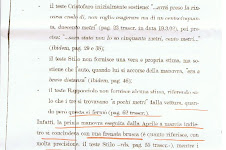



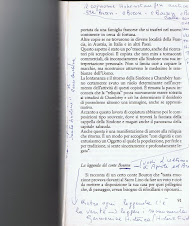

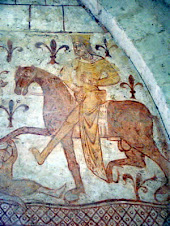













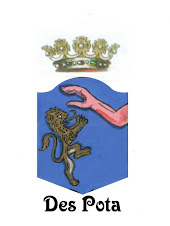


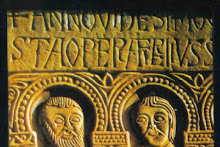
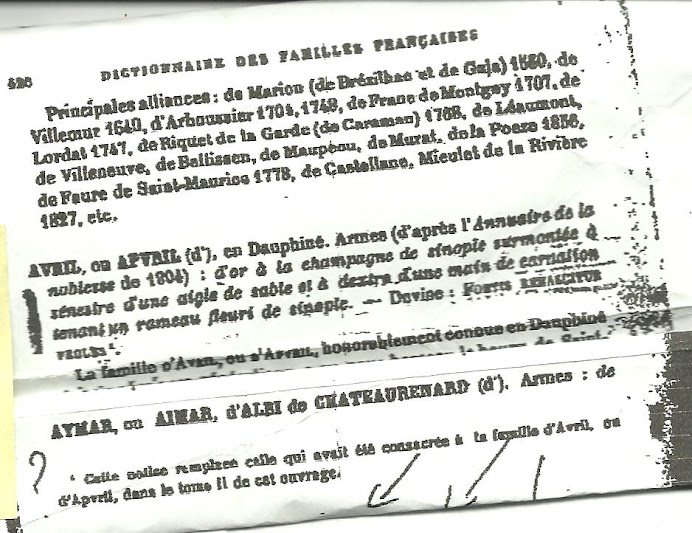.jpg)
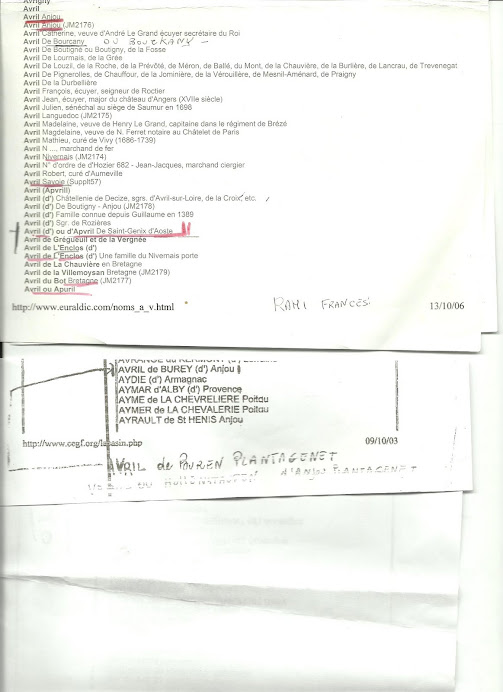.jpg)
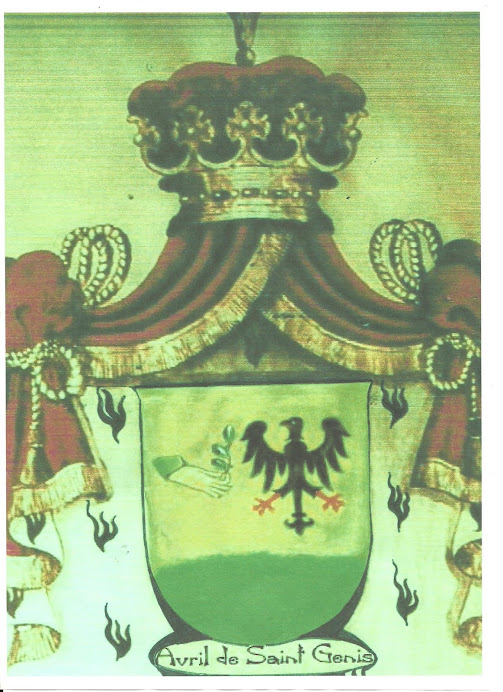.jpg)
.jpg)







.jpg)













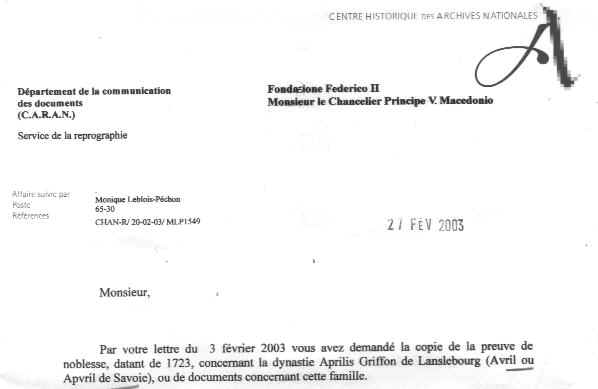
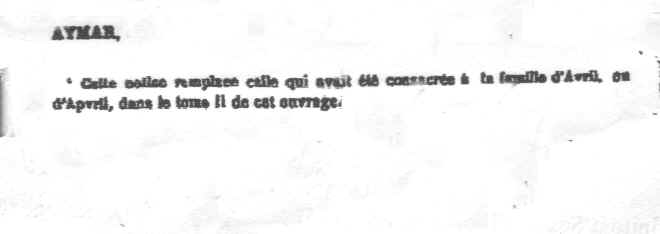

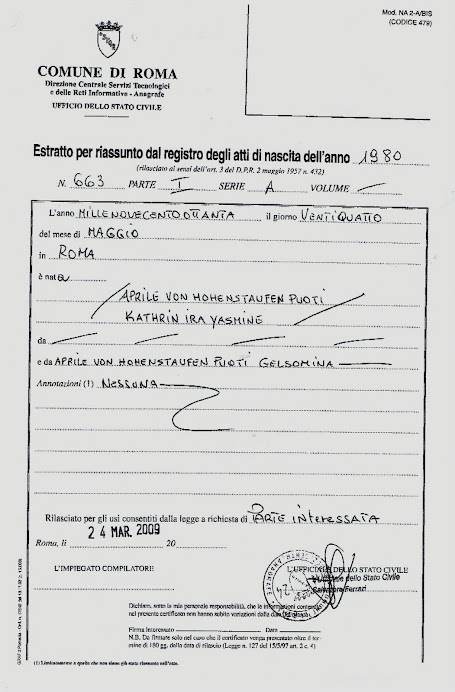

Nessun commento:
Posta un commento